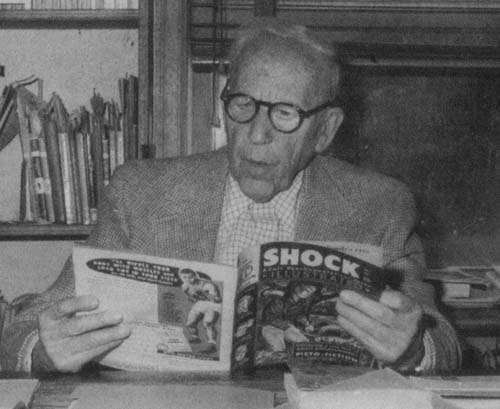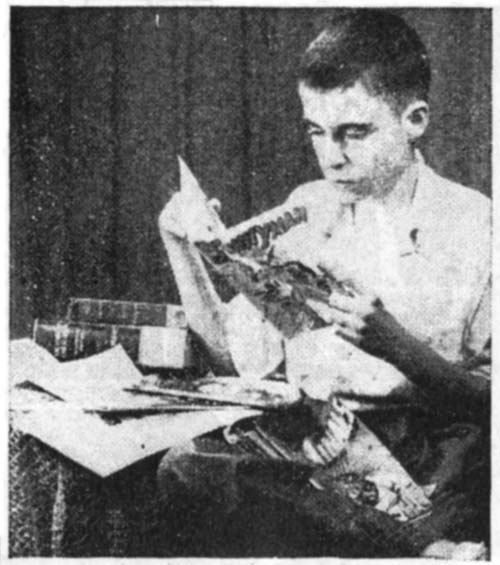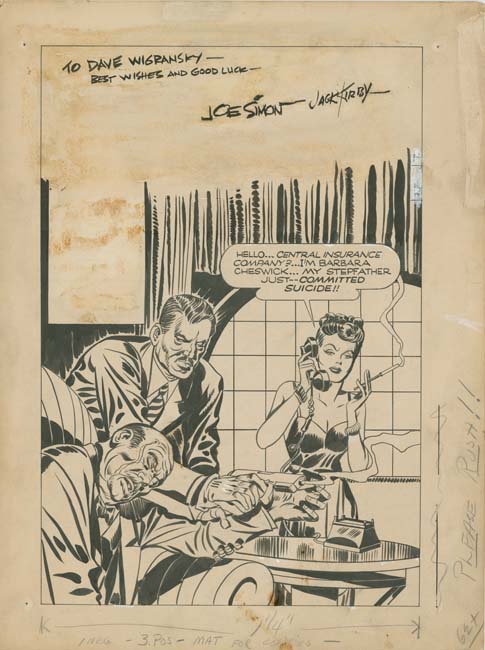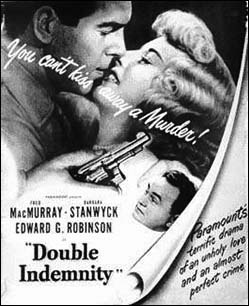
Frederic Wertham
The May 29, 1948 issue of the Saturday Review of Literature included an article “The Comics…Very Funny” by Dr. Fredric Wertham. Yes the very same Wertham whose 1954 book “The Seduction of the Innocent” initiated the events that crippled and nearly destroyed the comic book industry (The Real Reason for the Decline of Comics). The article was written in the same style used in his later book and likewise condemned the reading of comic books by children. Much of the article’s beginning is devoted to numerous descriptions of crimes perpetrated by children. As an example:
Think of the many recent violent crimes committed by young boys and girls. A twelve-year-old boy who kills his older sister; a thirteen-year-old burglar who operates with a shotgun; a seventeen-year-old boy who kills a thirteen-year-old boy a leaves a note signed “The Devil”…
The supposed links between the children’s’ crime and the reading of comics is provided in only a very few places but otherwise the connection between the crime and comics is largely ignored except for this rather surprising statement:
All these manifestations of brutality, cruelty, and violence and the manner in which they are committed–that is the folklore of the comic books.
In the article Wertham provided 17 points that he claimed supporters of comic books make and the arguments that can be made against them. For example:
7) That the children don’t imitate these stories. (But the increase of violence in juvenile delinquency has gone hand in hand with the increase in the distribution of comics books.)
(You can read the entire article at Seduction of the Innocent.org.)
“The Comics…Very Funny” certainly provide critics of comic books with useful ammunition. Frederic Wertham’s status as an authority and scientist carried much weight with the public. Wertham was effective in disarming his critics by pointing out that they were paid by comic book publishers. What was needed was someone independent from the comic book industry who could provide an articulate challenge to Wertham. Unexpectedly the most successful rebuttal was made by a 14 year old boy, David Wigransky.

David Pace Wigransky
Wigransky’s defense of comic books was published in the July 24th issue of the Saturday Review of Literature, the same periodical that published Wertham’s article. Wigransky’s letter was published under the title “Cain Before Comics” but the biblical reference that seemed more appropriate was David and Goliath. On the face of it, it would seem unlikely that a boy could offer very much of an intellectual challenge to an authority figure like Wertham. However of the two, Wigransky’s is the much more thought out discussion. When I read Wertham’s “Seduction of the Innocent” I was greatly bothered why everyone from that time did not see through his badly argued and poorly supported attach on comic books. Well David Wigransky did see right through it.
Wigransky pointed out that violence proceeded the creation of comic books. Further that good upbringing and reading good books were not proof against the adoption of murderous behavior in the young. While there were numerous readers of comic books, there were comparatively few delinquents. Wigransky noted that Wertham’s strong antipathy to comic books colored his investigations and reports. David suspected, correctly in my opinion, that Wertham manipulated his children patients to provide the evidence against comics that he, Wertham, expected. That the crusade against comic books was actually not really new; 1896 saw a crusade against the syndication comic strip “The Yellow Kid”. Crime and violence were looked at by comic book readers as adventure and excitement, not a something to experience. Wigransky predicted that generation of comic book readers would in the end turn out all right.
My summation of Wigransky’s article hardly does it justice. The reader can find the entire letter reprinted in “Mr. Monster’s Comic Crypt” by Michael Gilbert (Alter Ego 90, December 2009).
David Wigransky did a fabulous job of defending comic books against Frederic Wertham’s critical article. Wertham’s response was to totally ignore him. Wigransky is not once mentioned in “Seduction of the Innocent” nor were his arguments every addressed by Wertham.
But not everyone ignored Wigransky’s defense. An editorial piece, probably written by Stan Lee, appeared in some Atlas Comics. The editorial not only mentions David Wigransky by name but includes quotes from his letter. Comic artists gratefully noted Wigransky as well. Alfred Andriola sent David the original art for a Kerry Drake strip titles “There’s your case against D.D.T., Mr. D.A.!”. The strip is dated December 26, 1947. It was signed “best wishes to David Wigransky from Kerry Drake and Alfred Andriola” (Cartoon Drawings: Swann Collection of Caricature and Cartoon).

Headline #25 (July 1947), pencils by Jack Kirby, inks by Joe Simon, letters by Joe Simon?
More pertinent to this blog is that Joe Simon and Jack Kirby also recognized Wigransky’s contribution by presenting his with original art, the cover for Headline #25 (July 1947). The inscription was by Joe but Jack signed it as well. The cover is an early one from the start of Simon and Kirby’s work for Prize Comics after the war. Simon and Kirby had only produced two previous issues of Headline while Justice Traps the Guilty and Young Romance had yet to be launched. This cover was an apt choice to give to Wigransky considering that at this time it was the crime comics that were receiving the most negative criticism. Headline #25 was certainly the most graphic crime cover that Simon and Kirby had done to date. While there were some later covers that depicted dead or dying figures, this was the only one that showed the victim’s wound.

The cover featured the black humor that often accompanied Simon and Kirby’s crime covers. The female protagonist’s name was not random but was modeled on that of Barbara Stanwyck. Not that long previously Stanwyck had starred in “Double Indemnity” (released April 24, 1944). However in the movie it is Stanwyck’s husband that was murdered for the insurance, while for the cover it was the step-father.
Joe and Jack’s gift to David Wigransky was rather fortunate. Very little original art remains for Simon and Kirby’s early work on the crime genre. Today there is much more art for the earlier Stuntman and that only lasted two issues. The only other original art from Simon and Kirby’s early crime comics that I am aware of is one splash panel (“The Case of the Floating Corpse”, Headline #24, May 1947 that originally came from Joe Simon’s collection) and one unfinished cover (intended for Headline #44, November 1950 that had been kept by Jack Kirby).
The four corners of the original art for Headline #25 shows the imprint left by thumb tacks which can be seen even in the low resolution image I have provided. I like to think that they were used by Wigransky to fasten the art to his bedroom wall.
David Wigransky kept his interest in comic books at least for a couple of years. The December 1949 issue of Popular Mechanics includes an advertisement he ran looking for old comic books or original art. As an adult he wrote a book on the singer Al Jolson (“Jolsonography”, 1974). That rare work (a copy is being offered for $400) must have been published posthumously as David died in 1969 at what must have been about the age of 36.


Wertham looks quite engrossed in that mag he’s reading there, doesn’t he! If he thought ’40s and ’50s comics were bad, imagine what he’d say about the stuff that’s coming out now! Come to think of it, considering how far down the path of poor taste modern comics have gone, I kind of wish there was someone like Wertham around today to set the industry straight. In their mad quest to prove to everyone how “adult” and “mature” they are, all the creators of contemporary comics have done is prove how offensively adolescent, immature, sophomoric and pretentious they can be. And in the process I think they’ve made Wertham right–albeit sixty years later!
John,
I presume you are being facetious about asking for a modern day Wertham. Unlike the 50’s, most comics today are read by adults. There are a wide range of comic books available that no censor is required. Adults can just vote their preferences by what they actually purchase.
Actually Harry, I agree with you about voting your preferences by what you buy, but my beef is primarily with modern superhero comics, which have abandoned their former all-ages, general-reader appeal, in favor of catering to a small group of rabid fanboys whose ideas of what constitutes “maturity” are questionable at best. True maturity is built on the qualities of restraint, respect and inner strength, and I don’t believe that turning heroes into alcoholics, drug addicts, wife beaters, rapists, etc. (as Marvel and DC have done) is a very good example of that. One of the qualities which set Kirby’s work apart was the fact that his characters always behaved with dignity–and that he, as the writer of their adventures, always treated them with dignity. Today’s writers could learn a lot from that example.
This is my very first post to this site, learning about it via Doc V’s Timely Atlas site. I am going to post a few thoughts, as Fred Wertham had a subscription to my 1969-70 comics fanzine FANZATION. Indeed, he called me on the phone to order a subscription from our 1969 adverts in RBCC, and I exchanged letters with him as well for a few years.
I bring this up because it is referenced and quoted from at least nine times in his last book The World of Fanzines (1974)
In this, his last book before he died later that year, he exonerates us comics fans and readers. Is worth picking up and reading.
Re the stats on “who” were reading comic strips and comic books, my intense research into this subject revealed that 94+% of all boys, 90+% of all girls and over 85% of all adults were comics readers back in the day
I think twas Television who saw comics as a threat vying for the attention span as well as advertising dollars who went after the comics industry back in the day.
Always, I am told, follow the money…..
Robert,
I have a copy of Wertham’s Fanzine book on my shelf ready for reading. Certainly Wertham is an interesting character in his own right, but the part “Seduction of the Innocent” in the collapse of the comic book industry is surely much more significant than whatever he has to say in his Fanzine book.
While I would not question your statistics of comic book readers by the young, I seriously doubt that 85% of adults read comic books at any point in their history.
Hello Harry,
Ah, you misconstrue a bit of what I wrote
85% of all adults reading comics is what I wrote, meaning not what you think of as a comic book such as Action Comics #1, Amazing Fantasy 15, or Zap Comics #1.
Rather newspaper comics in both daily papers and Sunday stand alone sections used to be once upon a time incredibly popular amongst the populace to the point guys like Fredrick Opper, Richard Outcault, Winsor McCay, George McManus, Billy DeBeck, Hal Foster, Al Capp, Walt Kelly, Charlie Schultz, Gerry Troudou, etc with the last “great” one being Bill Watterson,
used to be house hold names in a vast majority of the country no different than they “knew” Charlie Chaplin, WC Fields, Marylin Monroe, Mickey Mantle, Robin Williams, Leonardo Di Caprio, Angelina Jolie, Brad Pitt, etc etc
Coming into the 50s, going into the 60s and definitely hitting in the 70s, the readership of comics started going down
Television was the medium killing the paper delivery of news, entertainment, and a host of other ways of making the ease of being entertained, well, easier
The internet is now speeding up the process, as we are now here, and not doing it by ditto or mimeo fanzine processes like we did when I first got into comics fandom. Heck, like i wrote, Wertham subscribed to my zine Fanzation, a subject of his final “experiments” into the psyche of fans and readers of comics in a serious vein. Ditko has a letter in #3.
In Fanzation #5 we ran a series of “origins of comics fandom” articles by Jerry Bails on AE/TCR/CC birthing,
Bill Wallace on the origins of Houston comics fandom as it reached out into the rest of the country with some fantastic comicons,
Jack Promo on 1950s EC fanzine fandom, who, along with Jerry Bails, Shel Dorf and Ed April organized the first “real” multi-day comics convention Detroit Triple Fan Fair in 1964,
with the ditto we were able to squeeze a max of 125 copies out, John McGeehan is his House of Ideas comics fanzine indexing project akin to what the GCD Grand Comics Database project to now doing for the “comic book” of the world. I was pretty engaged there for some years along with a raft of other comics research projects until dual hip joint replacement became a substantial deterrent the past five years.
See, and I hope you have not been taking this personal, one has to look at the whole picture to see where and how certain forms of entertainment were hugely popular in what might seem like insane numbers back in the day
People who were too young then, or not even born, might have a hard time understanding the “Bat Mania” which hit in TV for 1966-67, then again in 1988-May 1989. Sales spiked, brought on by other media these days
Back in the day twas the other way around
The Comics of yore as published by Pulitzer, Hearst, Bennett (Little Nemo!), etc fueled the collective psyche of the country in ways newer generations might not comprehend at first. Does that make sense?
I studied at Bill Blackbeard’s San Francisco Academy of Comic Art from 1972 thru til after Bill sold out to OSU via Lucy Caswell. Am planning on visiting my old friend in the few days following San Diego this year. His holdings via complete sections was a mind blowing experience if you are into the world of comics as a way of life some of us entered into many moons ago – mentoring was very much appreciated, as was that what I got from the earliest serious comics collector I ever met, one Ernie McGee who at age 20 in 1914 set out to collect one of every comics section printed across the country. Twas his single known complete run which became that 1995 Yellow Kid book. Ernie’s YK collection passed to Jack Herbert, who in turn willed it to Bill to house in his SF Academy of Comic Art
Back on topic -“)
Wertham’s SOTI definitely had a blasting impact towards crime and horror comics,
but that attack was fueled by TV stock holders growing in number. Always follow the money is the old adage as one aspect of my research
And the demographics of the late 50s were altered to target 11-15 year old boys and girls, then kids were supposed to shred that aspect of their lives to prepare to become proper workers and debt holders,etc
SOTI definitely had a hand in making that become the Comics Code as the holders to the gates of the distribution kingdom which was the difference between life and death.
Simon & Kirby’s Mainline self publishing venture Police Trap, In Love, Bullseye, Foxhole, and their almost published hero book, Nightfigher.
Andru & Espostio’s MikeRoss Comics (love Get Lost! among a couple others which got out the door in 1954)
Excerpted from my article on Mainline Comics out of Jack Kirby Collector #25 from many moons ago now which can be read in full online right here:
http://twomorrows.com/kirby/articles/25mainline.html
>>>While still maintaining their contractual output for Crestwood just in case they belly-flopped, S&K took every royalty penny they had built up since the end of World War Two, along with the distribution clout of paper and printing broker George Dougherty, Jr. (a long-time paper broker for the lumber industry whose father had been one of the printers at Eastern Color on Funnies On Parade back in 1933) who was fronting the paper. A commonplace 25% deposit was advanced by Leader News to World Color Press in Sparta, Illinois against projected sales to cover the printing and engraving costs. Joe and Jack felt they were making all the right moves utilizing the expertise of Nevin Fidler, who also owned a small piece of the action. On the surface it all seemed like wise, sound business moves.
>>>Unfortunately, psychiatrist Fredric Wertham got a pre-publication excerpt for his book Seduction of the Innocent in the November 1953 issue of The Ladies Home Journal, seriously fueling fires which would soon rage out of control, culminating the following year in a moment of national hysteria. LHJ was very influential amongst America’s mothers of the day.
>>>(This was nothing new for this women’s magazine. LHJ’s earliest savage frontal assault on the comics began by 1909 attacking such legendary strips as Katzenjammer Kids, Happy Hooligan, Buster Brown, Foxy Grandpa, and others as unfit for children’s consumption.)<<<<<<
A lot of the comic book wars was and remains "follow the money"
Harry Donenfeld owned Independent News with Paul Sampliner
Donenfeld also owned Leader News, amongst other myriad smaller sub-distributor shell companies, no different than Goodman having 80 some periodical publishing corporations as legal shields
and he tied EC, Mainline, MikeRoss, others into this particular distributor, then made it go bankrupt as the one to take the fall for his previous non-Code efforts.
This is the guy who got another guy to take the fall for his Spicy pulp line when Superman took off,
and had given S&K a 50-50% split on what ever Simon & Kirby thought up for him following on the heals of the success of Captain America, back when Stan was getting Joe his donuts and coffee (according to Joe).
He also was able to take out some heavy duty competitors in the process as all Leader News books were simply being returned unopened to the main wholesaler central points. Bill Gaines melt down at the Senate hearings in early 1954 led to all ECs being banned over much of the country, hence, all Leader News comic books got scarred.
Anyway, I hope I covered a bit of the ground you seek. There is a LOT more to the story as I have gathered the details over the decades.
best
Robert Beerbohm
Perhaps I should have been clearer in my comment about your statistics on comic readers. I feel it is a mistake to lump syndication strip readers and comic book readers together. Certainly there was a clear distinction for the public at that time. While newspaper strips were considered acceptable entertainment for most of the family, comic books were generally looked on as only meant for kids.
I am not sure what question your latest comment was meant to answer but if it was concerning what was the cause of the collapse of the comic book industry then that is something that I have a different view. While follow the money sound very dramatic, I believe in following the data. What the data shows that the decline started about June 1954 and only took a couple of years. Any explanation for the comic book crash has to take that relatively quick demise into account. The rise of television cannot explain it as the rise in television owners was much more gradual and extended in time. I am sure television, newspapers, and even rival comic book publishers all had there reasons to try to fan the flames of resentment against comic books but they did not originate the resentment nor were major players. No criticism of comic books originated from members of the public who truly believed comic books were undesirable or at least felt it was a good self promoting position to take. Foremost among the anti-comics crusaders in terms of impact and respectability was Frederic Wertham. I covered this all in a previous post:
//kirbymuseum.org/blogs/simonandkirby/archives/1366
John,
Sadly you have become Goliath. Comics today are as good as ever. Read Dave’s letter. It brought tears to my eyes. Children see the fun while adults see the horror. You have forgotten what it is like to be a fun loving kid.
-Dave